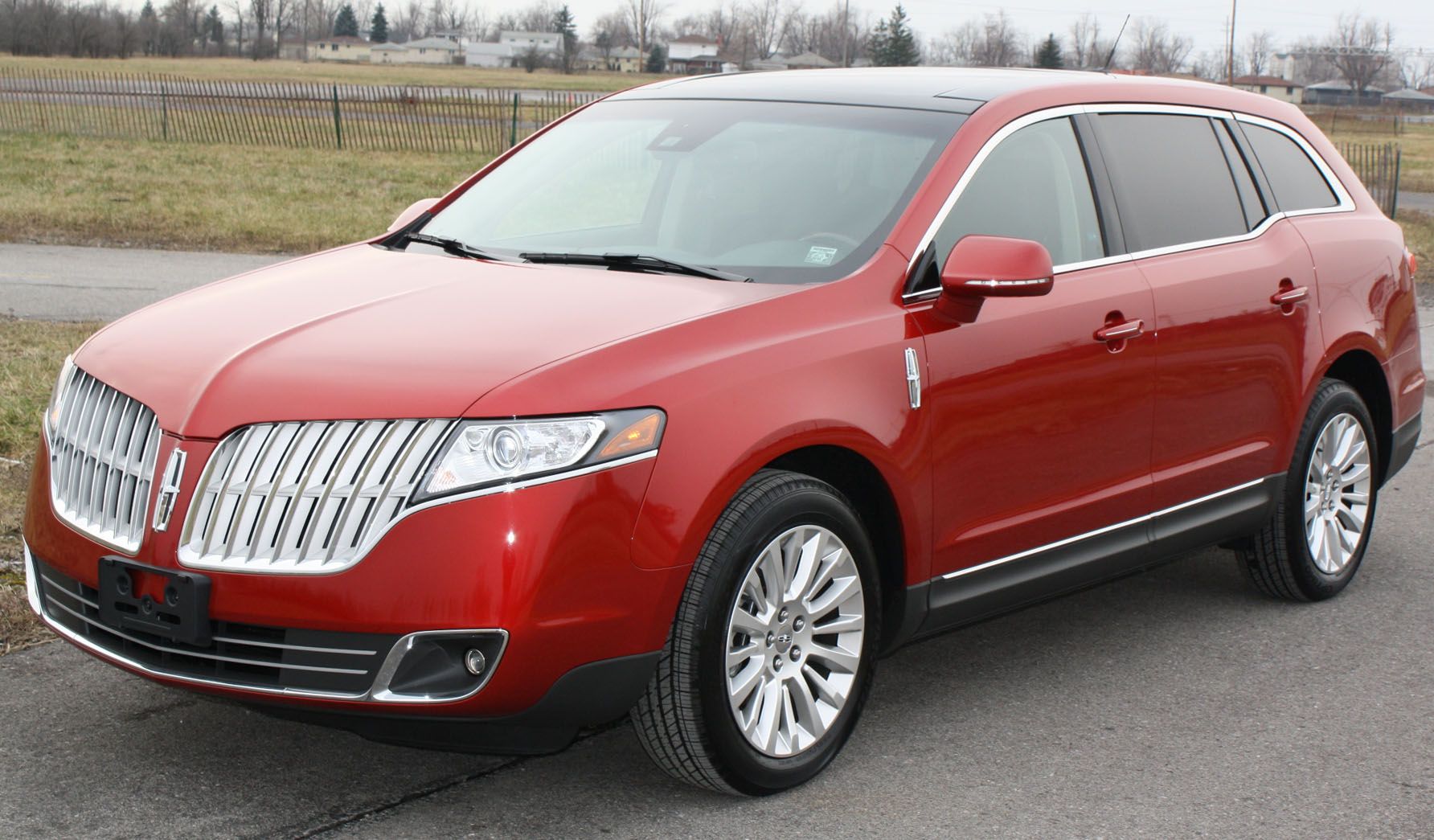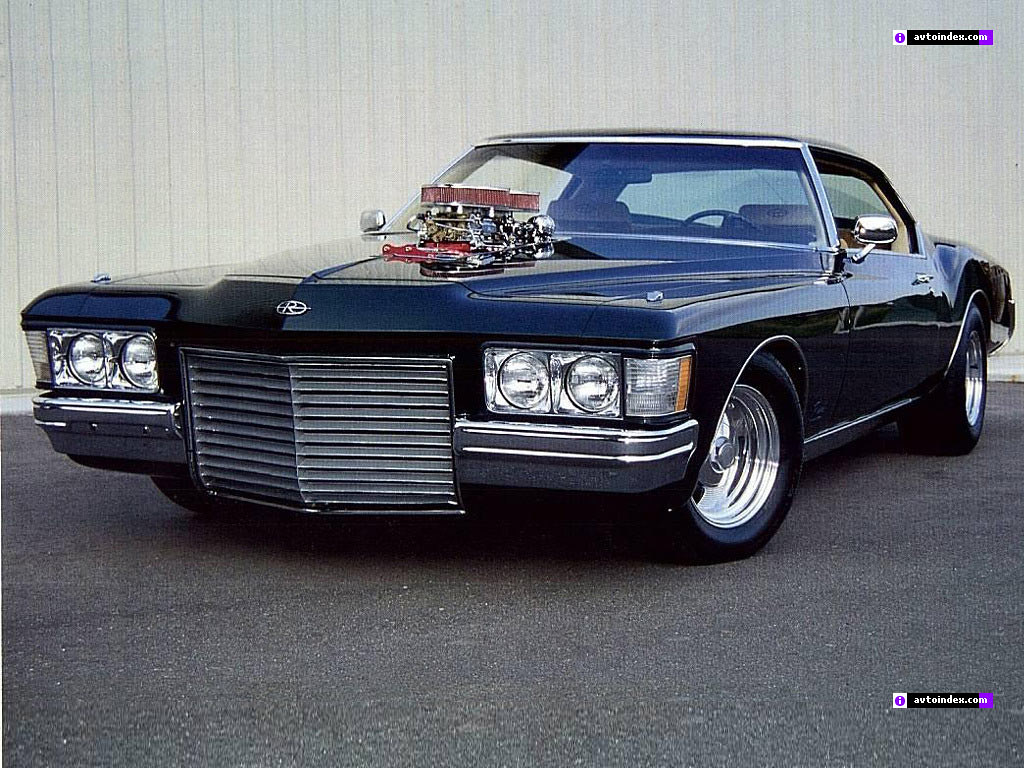
Let’s face it. Sometimes, the dream of a new car quickly becomes a nightmare. The initial excitement of driving a fresh set of wheels off the lot can be short-lived, replaced by a growing sense of frustration and, ultimately, deep buyer’s remorse. This feeling is particularly painful when considering the significant financial investment involved, whether it’s tens of thousands of dollars spent upfront or a multi-year loan commitment. Many vehicle manufacturers roll out models that initially look promising, only for them to fall dramatically short of expectations in the real world.
In an age where new and used car prices seem to climb relentlessly, knowing precisely what you’re getting into has never been more vital. Making a purchasing decision based solely on dazzling exterior aesthetics or a slick marketing campaign can easily lead you down a path of unforeseen troubles. The smart move, as countless experienced motorists will attest, is to learn from the mistakes and regrets of others before you make your own. It’s a proactive approach to car buying that prioritizes long-term satisfaction over fleeting first impressions.
To help you navigate the complex automotive landscape, we’ve compiled a definitive list of 15 vehicles that owners overwhelmingly wish they had never purchased. These are cars where the allure faded fast, replaced by a litany of mechanical headaches, unexpected costs, and a general lack of reliability that turned daily commutes into dreaded ordeals. Join us as we shine a spotlight on the first seven of these notorious models, dissecting the specific reasons why they’ve earned a place on this roster of regret.
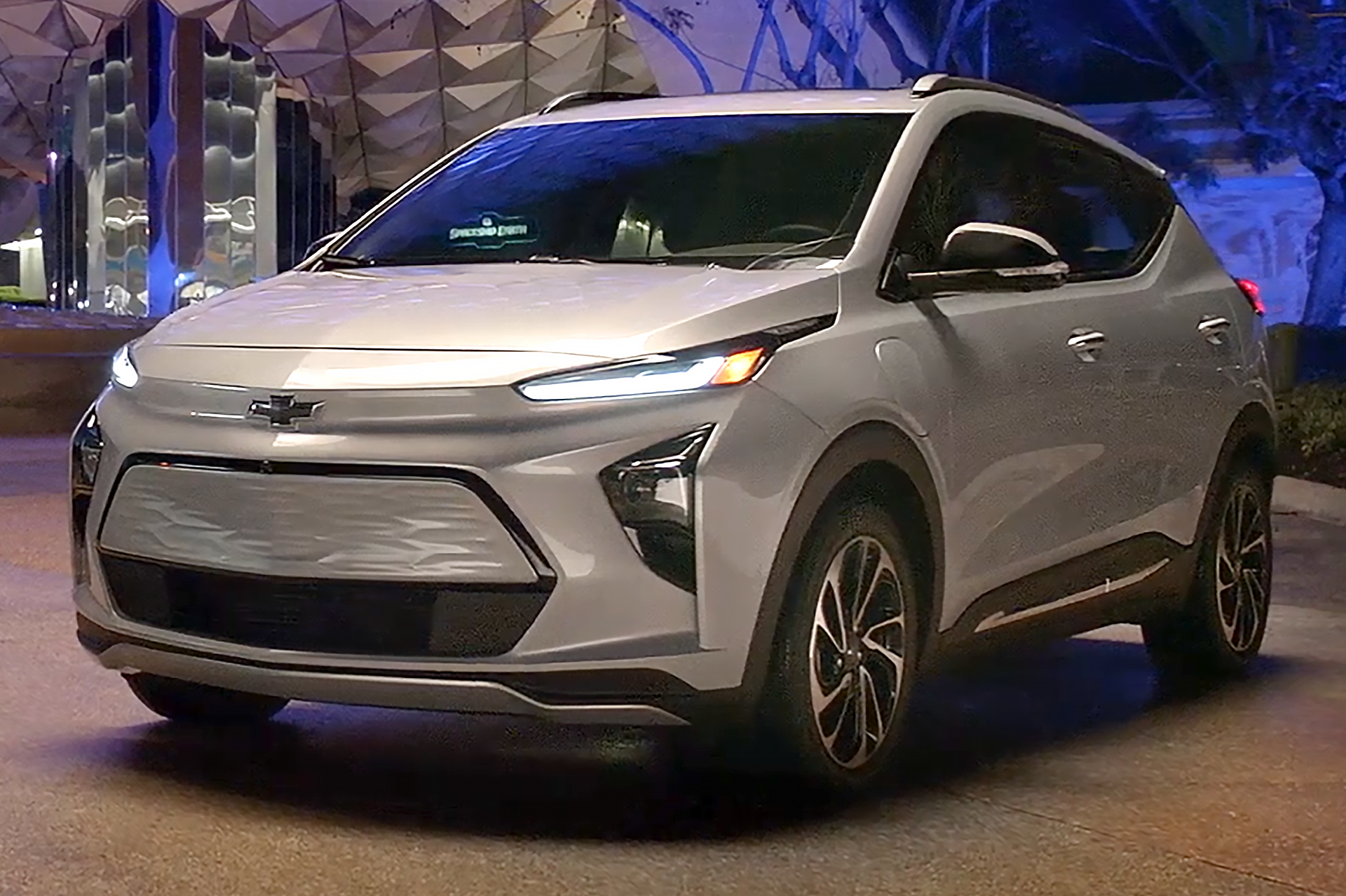
1. **Chevrolet Bolt**Kicking off our list of vehicles owners wish they could undo is the Chevrolet Bolt, General Motors’ well-intentioned foray into affordable electric mobility. On paper, the Bolt had a lot going for it, earning praise for its competitive pricing and offering a respectable driving range that made EV ownership accessible to a broader audience. Yet, beneath this promising exterior lay a host of issues that quickly transformed initial excitement into deep-seated regret for many.
The most notorious problem to plague the Chevrolet Bolt involved its lithium-ion batteries, manufactured by LG. This critical flaw led to an alarming propensity for the batteries to short-circuit, overheat, and, in severe cases, ignite into flames. The gravity of this safety hazard was such that it necessitated extensive and costly recalls in both 2020 and 2021, sending a clear message about the fundamental reliability concerns at the heart of the vehicle.
Beyond the severe battery fire risks, the Bolt’s ownership experience was further dampened by several other practical shortcomings. Owners frequently reported that the ride quality was merely “so-so,” failing to impress with comfort or refinement. Similarly, the space allocated for rear passengers was often deemed inadequate, making longer journeys a squeeze. Even the vehicle’s handling characteristics were described as unremarkable, leaving much to be desired for drivers seeking an engaging or even a particularly competent ride.
For many, the cumulative effect of these issues—ranging from critical safety defects to everyday driving annoyances—overshadowed any advantages the Bolt offered in terms of affordability or range. It became a stark reminder that a good price tag doesn’t always guarantee a good car, especially when core components pose significant risks and the overall driving experience leaves owners feeling underwhelmed and, ultimately, regretful.
Car Model Information: 2019 Chevrolet Bolt EV LT
Name: Chevrolet Bolt EV
Caption: 2022 Chevrolet Bolt EV
Manufacturer: General Motors
Production: unbulleted list
ModelYears: unbulleted list
Class: Subcompact car
BodyStyle: hatchback
Layout: Front-engine, front-wheel-drive layout
Predecessor: Chevrolet Spark EV
Categories: 2020s cars, All Wikipedia articles in need of updating, All articles containing potentially dated statements, All articles with unsourced statements, Articles containing potentially dated statements from February 2018
Summary: The Chevrolet Bolt EV (marketed in Europe as Opel Ampera-e) is a battery electric subcompact hatchback manufactured and marketed by General Motors under its Chevrolet brand from late 2016 until late 2023, with a brief hiatus between mid-2021 and early 2022.
The first-generation Bolt was developed and manufactured with LG Corporation. Sales of the 2017 Bolt began in California in December 2016; it was released nationwide and international markets release in 2017. A rebadged European variant was marketed as the Opel Ampera-e in mainland Europe. In 2017, the Bolt was the second-best-selling plug-in car in the United States. It was named the 2017 Motor Trend Car of the Year, the 2017 North American Car of the Year, an Automobile magazine 2017 All Star, and was listed in Time magazine’s Best 25 Inventions of 2016. The Ampera-e was discontinued after 2018. By the end of 2020, GM had sold 112,000 Bolt and Ampera-e cars worldwide. The first-generation Bolt had been subject to at least three recalls due to battery fire risks.
In mid-2023, GM officials said they would discontinue the Bolt; after outcry, they announced plans for a next-generation model, which is expected to be revealed in 2025 for model year 2026.
Get more information about: Chevrolet Bolt
Buying a high-performing used car >>>
Brand: Chevrolet Model: Bolt
Price: $12,999 Mileage: 64,980 mi.
Read more about: 12 Cars That Made Drivers Say ‘Nope, Not Again!’ – Your Ultimate Guide to Avoiding Instant Regret on Wheels
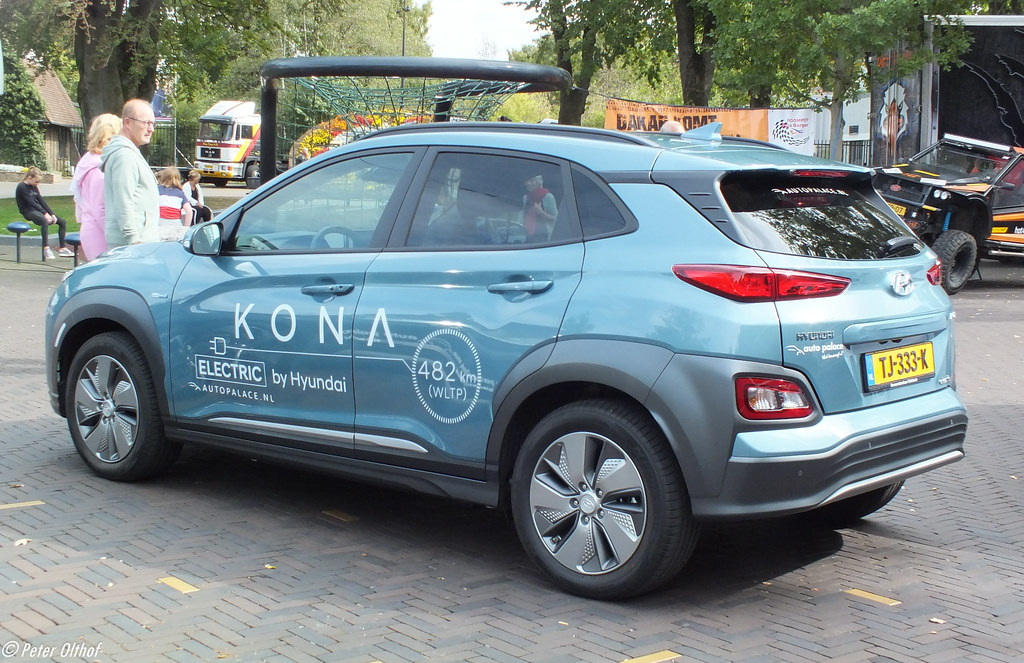
2. **Hyundai Kona Electric**Next up is another electric vehicle that, despite coming from a brand generally on a roll with innovative EVs, unfortunately lands firmly in the “regret” category: the Hyundai Kona Electric. While Hyundai has rightly earned accolades for pushing boundaries in the EV market, the Kona Electric stands out as a clear exception to their recent successes, proving that even the most innovative manufacturers can stumble.
Much like the Chevrolet Bolt, the Hyundai Kona Electric found itself embroiled in a significant controversy surrounding its battery safety. Battery fires and subsequent worldwide recalls became an unfortunate and defining part of this EV’s history. Hyundai acted decisively in 2020 and 2021, issuing recalls to replace battery packs in affected vehicles globally, aiming to mitigate the serious fire risks associated with faulty components.
However, as owners quickly discovered, the battery issues, while critical, were merely “the tip of the iceberg” when it came to the Kona Electric’s drawbacks. The sentiment among many who purchased this model rapidly shifted from anticipation to caution, embodying the classic “buyer beware” warning. While the context doesn’t explicitly detail other specific issues beyond the battery problems, the phrase strongly implies that other significant, unstated problems contributed to widespread owner dissatisfaction.
This recurring theme of battery-related safety concerns in early, mass-market EVs serves as a crucial cautionary tale for the industry and consumers alike. For the Hyundai Kona Electric, the combination of serious, headline-making defects and underlying, unspecified problems created an ownership experience that many motorists would eagerly reverse if given the chance, cementing its place on this list of regrettable purchases.
Car Model Information: 2020 Hyundai KONA Ultimate
Name: Hyundai Kona
Caption: Hyundai Kona N Line (SX2)
Manufacturer: Hyundai Motor Company
Aka: Hyundai Kauai (Portugal)
Production: 2017–present
ModelYears: 2018–present
Class: Subcompact crossover SUV
BodyStyle: SUV
Layout: ubl
Categories: 2020s cars, All-wheel-drive vehicles, All Wikipedia articles in need of updating, Articles containing Chinese-language text, Articles containing Korean-language text
Summary: The Hyundai Kona (Korean: 현대 코나) is a subcompact crossover SUV produced by the South Korean manufacturer Hyundai. The first-generation Kona debuted in June 2017 and the production version was revealed later that year. It is positioned between the Venue or Bayon and the Tucson in Hyundai crossover SUV line-up. The battery electric version called the Kona Electric (or Kona EV) was first launched in South Korea during the first half of 2018 and rolled out gradually worldwide afterwards.
Get more information about: Hyundai Kona
Buying a high-performing used car >>>
Brand: Hyundai Model: Kona
Price: $19,486 Mileage: 51,542 mi.
Read more about: 12 Cars That Made Drivers Say ‘Nope, Not Again!’ – Your Ultimate Guide to Avoiding Instant Regret on Wheels
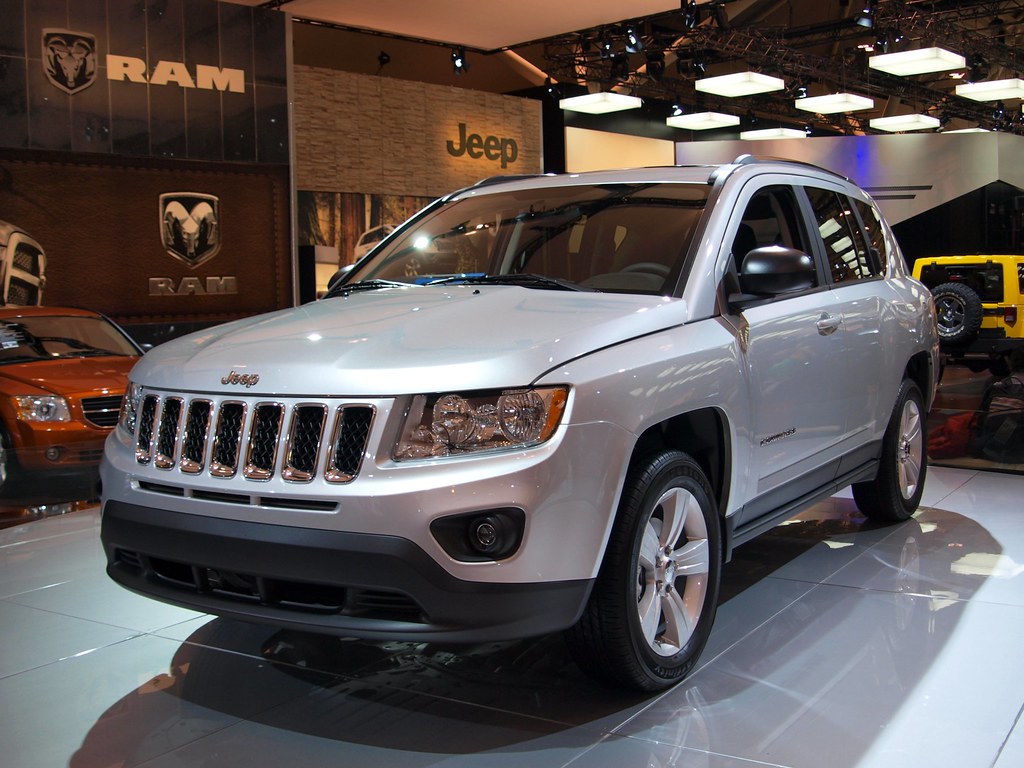
3. **Jeep Compass**Moving away from electric vehicles, our third entry brings us to a compact SUV that many owners describe as a “migraine headache on wheels”: the Jeep Compass. Despite carrying the iconic Jeep badge, which conjures images of rugged capability, various model years of the Compass have unfortunately become synonymous with chronic reliability issues, leaving a trail of frustrated drivers in their wake.
At the forefront of owner complaints are the transmission systems, specifically both the continuously variable transmission (CVT) and the 9-speed automatic transmissions. These crucial components have been widely reported to suffer from “herky-jerky shifting” and, more alarmingly, instances of “catastrophic failure.” Such fundamental problems with a vehicle’s gearbox inevitably lead to a compromised driving experience and significant, expensive repairs.
The transmission woes are far from the only issues plaguing the Jeep Compass. Owners also frequently cite “poor engine performance,” indicating a lack of power and responsiveness that detracts from daily driving. Adding to the list of mechanical headaches are reports of “excessive oil consumption,” a problem that can lead to costly engine damage if not vigilantly monitored. Furthermore, “electrical system issues” contribute to the Compass’s reputation for unreliability, affecting various components and functions within the vehicle.
For those drawn to the Jeep brand for its perceived durability and adventurous spirit, the reality of owning a Compass has often been a harsh awakening. The consistent reports of major mechanical failures and persistent electrical glitches paint a picture of a vehicle that demands far more from its owners in terms of patience and repair bills than it delivers in reliable transportation. It’s a clear instance where the allure of a brand doesn’t translate into a satisfying ownership experience.
Car Model Information: 2019 Jeep Wrangler Sport
Name: Jeep Compass
Caption: 2019 Jeep Compass
Manufacturer: Jeep
Production: 2006–present
ModelYears: 2007–present
Class: Compact crossover SUV
BodyStyle: SUV
Layout: Front-engine, front-wheel-drive layout
Chassis: Unibody
Categories: 2010s cars, 2020s cars, All-wheel-drive vehicles, All Wikipedia articles written in American English, Articles with short description
Summary: The Jeep Compass is a compact crossover SUV, introduced in 2006 for the 2007 model year. The first generation Compass and Patriot, its rebadged variant, were among Jeep’s first crossover SUVs. The second-generation Compass debuted in September 2016 in Brazil and at the Los Angeles International Auto Show in November 2016, sharing a modified platform with the Renegade. It is positioned between the smaller Renegade and the larger Cherokee globally or the Commander in South America. The third-generation Compass debuted in May 2025, built on the STLA Medium by Stellantis, shared with other PSA Groupe vehicles.
Get more information about: Jeep Compass
Buying a high-performing used car >>>
Brand: Jeep Model: Compass
Price: $19,977 Mileage: 68,026 mi.
Read more about: 12 Cars That Made Drivers Say ‘Nope, Not Again!’ – Your Ultimate Guide to Avoiding Instant Regret on Wheels
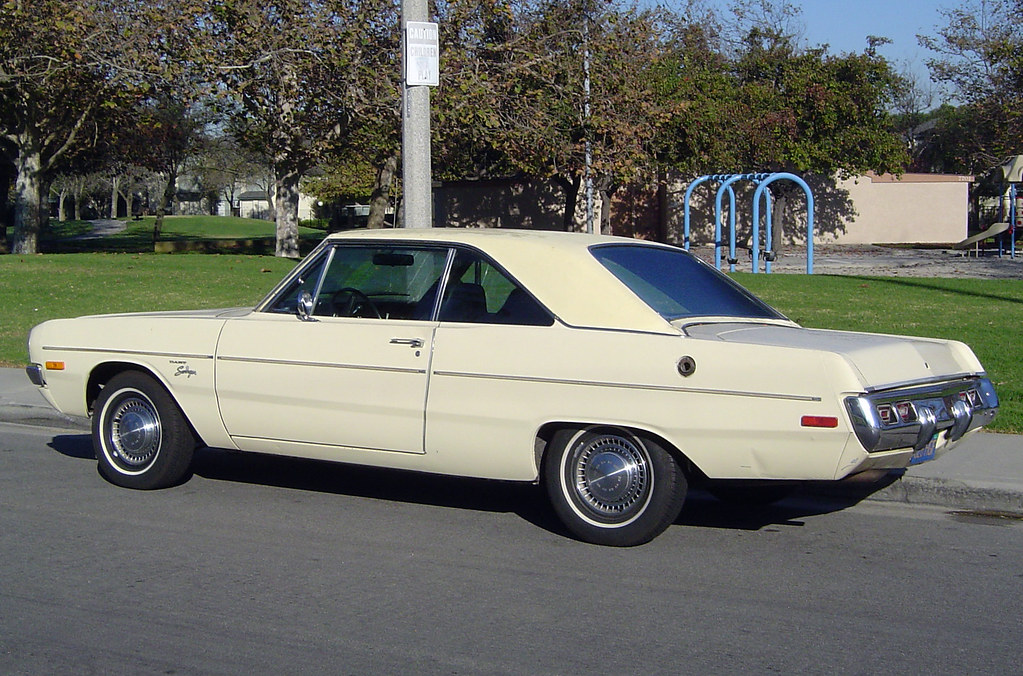
4. **Dodge Dart**Our journey through regretful car purchases now brings us to the Dodge Dart, a compact sedan that, despite its smaller stature, notoriously came with “full-size car problems.” This model quickly became a prime example of how ambitious design can be undermined by fundamental reliability issues, leaving its owners with little but frustration.
The issues with the Dodge Dart were incredibly pervasive, touching nearly every critical aspect of the vehicle’s mechanics. Owners reported widespread problems “from the transmission to the engine and from the suspension to the brakes,” indicating a comprehensive failure in engineering and manufacturing across multiple systems. This wasn’t a case of a single isolated flaw, but rather a car that seemed to struggle with its core functionalities.
The depth of owner dissatisfaction with the Dodge Dart is strikingly evident in consumer surveys. According to insights from Consumer Reports, a staggering “around six in 10 buyers say they are not satisfied with the vehicle.” This high percentage of regret underscores the significant gap between what buyers expected and what the Dart actually delivered in terms of reliability, performance, and overall ownership experience.
For many, the Dart’s promise of an affordable, stylish compact sedan was overshadowed by a constant stream of mechanical headaches and a feeling of having bought into a flawed product. It became a car that not only drained wallets but also eroded trust in the brand, making it a definitive entry on any list of vehicles that owners would enthusiastically “unselect” given the chance to rewind their purchase decision.
Car Model Information: 1972 Dodge Dart Swinger
Name: Dodge Dart
Caption: 1966 Dodge Dart GT 2-door hardtop
Manufacturer: Dodge
Production: 1959–1976 (US market)
ModelYears: 1960–1976 (US market)
Class: Full-size
Layout: FR layout
Predecessor: Dodge Coronet#Fourth generation (1957–1959)
Related: Plymouth Valiant,Chrysler Valiant,Dodge Phoenix
Successor: Dodge Aspen,Dodge Diplomat,Talbot Tagora
Categories: 1970s cars, All articles with unsourced statements, Articles with short description, Articles with unsourced statements from December 2023, Articles with unsourced statements from May 2025
Summary: The Dodge Dart is a line of passenger cars produced by Dodge from the 1959 to 1976 model years in North America, with production extended to later years in various other markets.
The production Dodge Dart was introduced as a lower-priced full-size model in 1960 and 1961, but became a mid-size car for one model year for 1962, and was then reduced to a compact for two generations, from 1963 to 1976.
Chrysler had first used ‘Dart’ name plates on two Italian styled show cars, in 1956 and 1957, before it became a Dodge model name. The Dart nameplate was resurrected for a Fiat-derived compact car that was introduced in 2012.
Get more information about: Dodge Dart
Buying a high-performing used car >>>
Brand: Dodge Model: Dart
Price: $18,250 Mileage: 40,424 mi.
Read more about: 12 Cars That Made Drivers Say ‘Nope, Not Again!’ – Your Ultimate Guide to Avoiding Instant Regret on Wheels

5. **Dodge Grand Caravan**The Dodge Grand Caravan holds a unique place in the hearts of many families, often serving as a backdrop for countless road trips and daily commutes. Yet, while some memories may be fond, the reality for a significant number of owners tells a very different story, marking this minivan as anything but a “smooth driving” experience and leading to considerable regret.
The primary source of dismay for Grand Caravan owners centers squarely on its transmission. “Transmission failure is a common complaint,” making it incredibly challenging for families to rely on this vehicle as their primary “family, pet, and thing hauler.” Before outright failure, these transmissions typically exhibited a range of alarming symptoms, including “delayed gear engagement, rough shifting, and slipping,” all indicative of a system under severe strain and destined for an early demise.
The woes of the Grand Caravan weren’t limited to just the gearbox. Many owners also reported persistent “electrical system problems,” which can manifest in a myriad of frustrating ways, from power window failures to intermittent dashboard warnings. Adding to the mechanical grievances was “heavy oil consumption,” a sign of engine wear that can lead to unexpected top-ups and potential long-term damage if not addressed.
Given this litany of significant mechanical and electrical faults, it’s hardly surprising that many owners expressed a profound desire for a “do-over,” stating they “would gladly choose something else” if they could rewind time. The Dodge Grand Caravan, despite its spacious utility, ultimately became a symbol of unreliability and constant maintenance for a large segment of its ownership base, cementing its position among cars buyers wish they had never brought home.
Car Model Information: 2023 Honda Civic Sport
Caption: 2011 Dodge Grand Caravan Mainstreet
Name: Dodge Grand Caravan
Manufacturer: Chrysler Corporation,Daimler AG,Chrysler LLC,Chrysler Group LLC,FCA US LLC
Class: Minivan
Layout: FF layout,F4 layout
Production: November 2, 1983 –August 21, 2020
ModelYears: 1984–2020
Related: Plymouth Voyager,Chrysler Town & Country (minivan),Dodge Mini Ram,Chrysler Voyager,Volkswagen Routan
Assembly: Windsor, Ontario,Fenton, Missouri,Fenton, Missouri,Fuzhou
Successor: Dodge Journey,Chrysler Voyager
Categories: All-wheel-drive vehicles, All articles with unsourced statements, Articles with short description, Articles with unsourced statements from December 2017, Articles with unsourced statements from May 2009
Summary: The Dodge Caravan is a series of minivans manufactured by Chrysler from the 1984 through 2020 model years. The Dodge version of the Chrysler minivans, was marketed as both a passenger van and a cargo van (the only version of the model line offered in the latter configuration). For 1987, the model line was joined by the long-wheelbase Dodge Grand Caravan. Produced in five generations across 36 model years, the Dodge Caravan is the second longest-lived Dodge nameplate (exceeded only by the Dodge Charger). Initially marketed as the Dodge counterpart of the Plymouth Voyager, the Caravan was later slotted between the Voyager and the Chrysler Town & Country. Following the demise of Plymouth, the model line became the lowest-price Chrysler minivan, ultimately slotted below the Chrysler Pacifica.
Sold primarily in the United States and Canada, the Dodge Caravan was also marketed in Europe and other international markets under the Chrysler brand (as the Chrysler Voyager or Chrysler Caravan). From 2008 onward, Dodge marketed the model line only as the Grand Caravan; Ram Trucks sold a cargo-only version of the model line as the Ram C/V Tradesman. The model line was also rebranded as the Volkswagen Routan from 2009 through 2014.
After the 2020 model year, the Dodge Grand Caravan was discontinued, ending production on August 21, 2020. For 2021 production, the Grand Caravan nameplate was moved to Chrysler, which used it for a Canadian-market version of the Chrysler Pacifica (in the United States, the exact vehicle was marketed as the Chrysler Voyager).
For its entire production run, the Dodge Caravan/Grand Caravan was manufactured by Chrysler Canada (now Stellantis Canada) at its Windsor Assembly facility (Windsor, Ontario). From 1987 until 2007, the model line was also manufactured by Chrysler at its Saint Louis Assembly facility (Fenton, Missouri). Since their introduction in late 1983, over 14.6 million Chrysler minivans have been sold worldwide (including export versions and versions sold through rebranding).
Get more information about: Dodge Caravan
Buying a high-performing used car >>>
Brand: Dodge Model: Grand Caravan
Price: $27,589 Mileage: 27,524 mi.
Read more about: 12 Cars That Made Drivers Say ‘Nope, Not Again!’ – Your Ultimate Guide to Avoiding Instant Regret on Wheels

6. **Nissan Sentra**The Nissan Sentra is a nameplate that has seen its share of ups and downs, but for specific model years, it has certainly landed on the “down” side, becoming a source of major regret for many drivers. While acknowledging that not all Sentras are created equal, a particular period stands out as notoriously problematic, causing widespread frustration for its owners.
Prospective buyers are strongly advised to “stay away from the ones made from 2013 to 2019.” The core culprit behind the Sentra’s poor reputation during these years is its “infamous CVT” (Continuously Variable Transmission). This transmission system became a literal “thorn in the side of many Sentra owners,” known for a range of performance-degrading issues.
The CVT problems reported by owners were extensive and deeply impacted the driving experience. These included frequent “overheating,” leading to diminished performance and potential long-term damage, along with “jerky acceleration” and an unpleasant “shuddering” sensation during operation. These issues not only made the car less enjoyable to drive but also raised serious questions about its longevity and reliability.
Beyond the persistent transmission troubles, the Sentra also suffered from a broader “laundry list of issues,” including alarming instances of “engine stalling.” Furthermore, the vehicle was subject to “many recalls related to the vehicle’s airbags, seatbelts, brakes, and more,” pointing to a systemic pattern of quality control concerns. For those who purchased a Sentra during these problematic years, the daily grind of owning such a vehicle quickly eroded any initial satisfaction, leading to a strong desire for a different choice.
Car Model Information: 2018 Nissan Sentra S
Name: Nissan Sentra
Caption: 2021 Nissan Sentra SR (B18; Canada)
Manufacturer: Nissan
Aka: Nissan Sunny
Production: 1982–present
Class: Subcompact car
Predecessor: Nissan Sunny#B310
Categories: 1990s cars, 2000s cars, 2010s cars, 2020s cars, All Wikipedia articles written in American English
Summary: The Nissan Sentra is a series of automobiles manufactured by the Japanese automaker Nissan since 1982. Since 1999, the Sentra has been categorized as a compact car, while previously it occupied the subcompact class. Until 2006, Sentra was a rebadged export version of the Japanese Nissan Sunny, but since the 2013 model year, Sentra is a rebadged export version of the Sylphy. The Sentra nameplate is not used in Japan. Many other countries in Latin America sell their versions of the Sunny as the Sentra. In Mexico, the first three generations of the Sentra were known as the Nissan Tsuru (Japanese for crane), and the B13 model was sold under that name until 2017, alongside the updated models badged as Sentra.
In North America, the Sentra currently serves as Nissan’s compact car, despite being rated as a mid-size car by the EPA due to its interior volume since the 2007 model year. While previous Sentras were subcompacts, the Sentra has grown over the years, with the Nissan Versa having replaced the Sentra in the entry-level area.
The Sentra name was created for Nissan by Ira Bachrach of NameLab, and Bachrach describes the origin as “Nissan wanted consumers to understand that it was quite safe even though it was small. The word Sentra sounds like central as well as sentry, which evokes images of safety.”
Get more information about: Nissan Sentra
Buying a high-performing used car >>>
Brand: Nissan Model: Sentra
Price: $10,650 Mileage: 78,361 mi.
Read more about: 12 Cars That Made Drivers Say ‘Nope, Not Again!’ – Your Ultimate Guide to Avoiding Instant Regret on Wheels
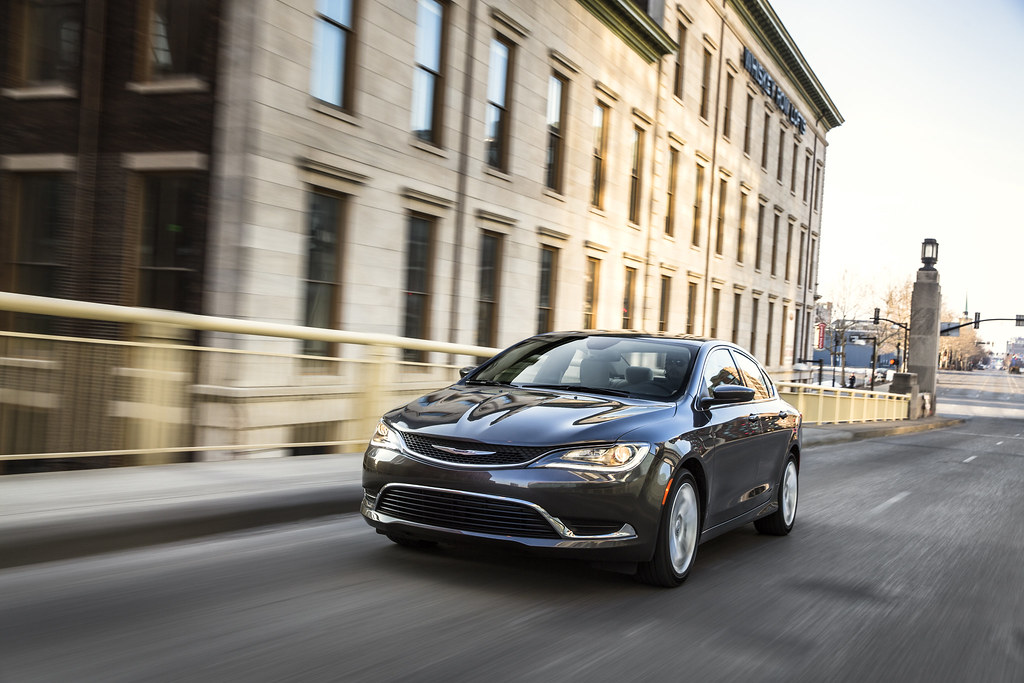
7. **Chrysler 200**Rounding out the first half of our list of regrettable car purchases is the Chrysler 200, a sedan produced between 2011 and 2017 that became unfortunately well-known for its myriad “reliability issues.” Despite its efforts to compete in the highly contested mid-size sedan segment, the 200 consistently fell short, leaving a legacy of owner dissatisfaction.
A significant portion of the Chrysler 200’s problems revolved around its transmission, particularly the 9-speed automatic transmission found in the 2015, 2016, and 2017 models. Owners of these specific years found this transmission “to be especially problematic,” exhibiting a range of operational flaws. This wasn’t merely an annoyance; for many, it escalated into outright “transmission failure,” representing a major mechanical breakdown.
The transmission woes, however, were “just for starters.” The Chrysler 200 also contended with “engine performance problems,” which could manifest as a lack of power, inconsistent operation, or other mechanical irregularities that detracted from the driving experience. These fundamental issues with both the powertrain and transmission meant that the car often struggled with its most basic functions.
For consumers who chose the Chrysler 200, the reality of ownership often diverged sharply from expectations, leading to frequent service visits and unexpected repair costs. The cumulative effect of these reliability concerns, from problematic transmissions to engine performance shortfalls, made the Chrysler 200 a clear candidate for our list of vehicles that motorists sincerely wish they had bypassed, solidifying its reputation as a choice many came to regret.
Our journey through the landscape of automotive regret continues, shifting focus to a new set of vehicles that, for various compelling reasons, have left their owners wishing for a do-over. Just as with the previous entries, the cars we’re about to explore demonstrate a clear disconnect between initial promise and long-term ownership reality. These are the models where persistent mechanical failures, frustrating design flaws, or simply poor overall performance have steadily chipped away at owner satisfaction, transforming a once-exciting purchase into a source of enduring frustration.
The lessons learned from these vehicles are invaluable for any prospective buyer. They serve as stark reminders that beneath a gleaming exterior or an attractive price tag, lurk potential issues that can drain both your wallet and your patience. Let’s delve into the next eight models that have earned their place on this unfortunate list, dissecting the specifics of why their owners often feel a profound sense of remorse.
Car Model Information: 2015 Chrysler 200 S
Name: Chrysler 200
Manufacturer: Chrysler
Production: 2010–2016
ModelYears: 2011–2017
Assembly: Sterling Heights, Michigan
Class: Mid-size car
Sp: us
Predecessor: Chrysler Sebring
Categories: 2010s cars, All articles with dead external links, All articles with unsourced statements, Articles with dead external links from July 2020, Articles with permanently dead external links
Summary: The Chrysler 200 is a mid-size sedan that was manufactured and marketed by Chrysler from model years 2011 to 2017 across two generations in four-door sedan and two-door convertible (first generation only) body styles.
The 200 nameplate debuted on the 200C, a prototype hybrid vehicle shown at the 2009 North American International Auto Show in Detroit and based on the Chrysler 300. The 200C concept was engineered to accept either traditional gasoline, hybrid or full-electric powertrains.
Get more information about: Chrysler 200
Buying a high-performing used car >>>
Brand: Chrysler Model: 200
Price: $7,200 Mileage: 122,275 mi.
Read more about: Is Your Ride a ‘Menace’? Unpacking the 12 Cars That Scream ‘Terrible Driver Vibes’ on the Road!
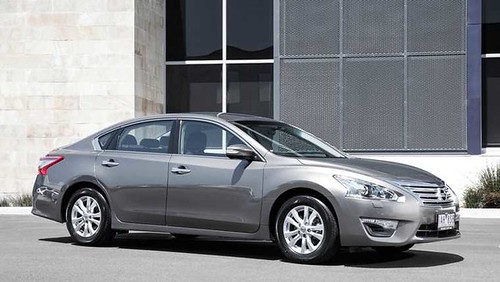
8. **Nissan Altima**Another nameplate that frequently surfaces in conversations about buyer’s remorse is the Nissan Altima. This sedan, often chosen for its practicality and sometimes its appealing price point, has unfortunately become synonymous with a range of mechanical headaches that detract significantly from the ownership experience. It serves as a prime example of how even a popular model can fall short of long-term reliability expectations.
The primary culprit behind much of the Altima’s owner dissatisfaction, particularly in the 2013 to 2019 model years, is its continuously variable transmission (CVT). This transmission system, which Nissan has heavily relied upon, has proved problematic across multiple models in its lineup. Owners frequently report issues that range from an irritating droning noise during acceleration to more severe performance degradation, fundamentally compromising the driving experience.
Beyond the persistent CVT woes, the Altima has also been cited for other significant concerns that contribute to buyer’s regret. Drivers have reported issues with the steering system, leading to a less confident and engaging feel behind the wheel. Furthermore, problems such as excessive oil consumption and oil leaks are not uncommon, hinting at deeper engine-related issues that can lead to costly maintenance and a general sense of unreliability. The infotainment system often feels dated and unresponsive compared to its rivals, a subtle but constant reminder of its shortcomings.
Compounding these mechanical and technological frustrations is the Altima’s braking performance, which has consistently underperformed in independent testing, requiring longer stopping distances than many competitors. While these issues might not always lead to catastrophic failure, their cumulative effect creates an ownership experience that is far from satisfying, leaving many owners wishing they had explored other options.
Car Model Information: 2020 Nissan Altima 2.5 SL
Name: Nissan Altima
Caption: 2024 Nissan Altima SR (L34; US)
Manufacturer: Nissan
Aka: Nissan Bluebird
Production: 1992–present
Class: Compact car
Predecessor: Nissan Bluebird,Nissan Stanza
ModelYears: 1993–present
Categories: 2000s cars, 2010s cars, 2020s cars, All-wheel-drive vehicles, All Wikipedia articles written in American English
Summary: The Nissan Altima is a mid-size car manufactured by Nissan since 1992. It is a continuation of the Nissan Bluebird line, which began in 1955.
The Altima has historically been larger, more powerful, and more luxurious than the Nissan Sentra but less so than the Nissan Maxima. The first through fourth-generation cars were manufactured exclusively in the United States and officially sold in North and South America, along with the Middle East and Australia. For other markets, Nissan sold a related mid-size sedan called the Nissan Teana which was between the Altima and Maxima in terms of size. In 2013, the Teana became a rebadged version of the fifth-generation Altima.
The name “Altima” was originally applied to a top trim line of the Nissan Leopard for the Japanese market in 1986, and then to the Nissan Laurel Altima mid-size car sold in Central America and the Caribbean before 1992. In 1992, Nissan discontinued the Stanza which was a Nissan Bluebird clone, replacing it with the US-built Altima, while remaining a compact car. The first Altima was produced in June 1992, as a 1993 model. All Altima models for the North American market were built in Smyrna, Tennessee, until June 2004, when Nissan’s Canton, Mississippi plant also began producing the model to meet high demand.
Get more information about: Nissan Altima
Buying a high-performing used car >>>
Brand: Nissan Model: Altima
Price: $15,990 Mileage: 93,989 mi.
Read more about: 12 Cars That Made Drivers Say ‘Nope, Not Again!’ – Your Ultimate Guide to Avoiding Instant Regret on Wheels
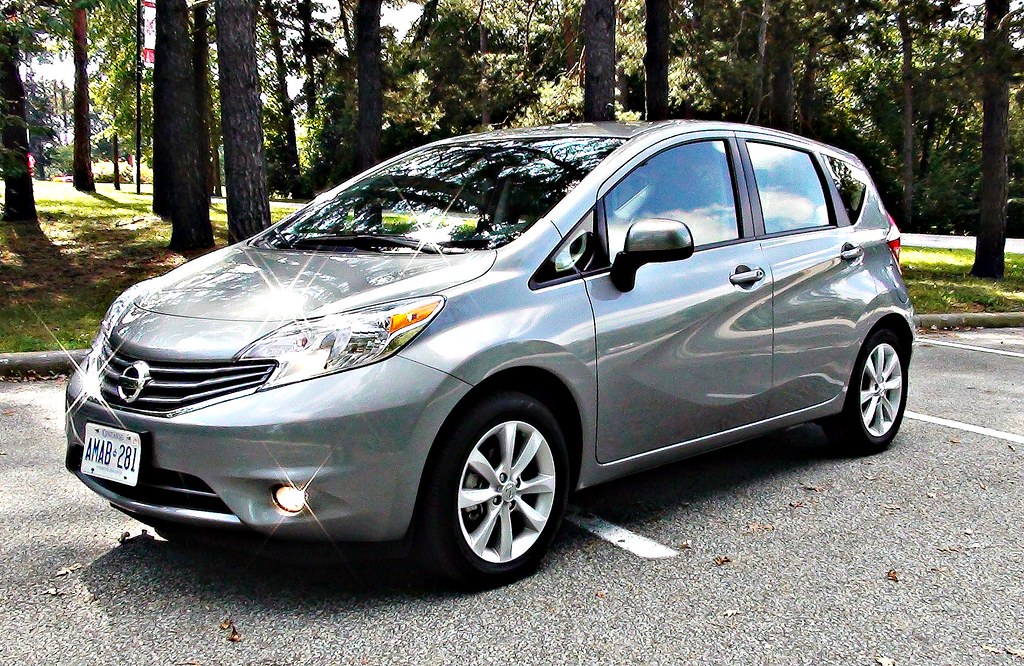
9. **Nissan Versa Note**When a vehicle’s low price point mirrors its quality level, it’s a recipe for buyer’s remorse, and that’s precisely the story of the Nissan Versa Note. Marketed as a super-cheap small hatchback, this model often lured buyers with its affordability, only to frustrate them with a driving experience that quickly revealed its cost-cutting compromises. It illustrates that a bargain price can sometimes come with a hidden, high cost in terms of satisfaction.
Just like its Altima sibling, the Nissan Versa Note was saddled with the problematic continuously variable transmission (CVT). This transmission proved to be a constant source of vexation for owners, characterized by its tendency to deliver an uninspiring and often unrefined driving feel. The issues inherent in this CVT system, including its lack of responsiveness, were particularly pronounced when paired with the Versa Note’s modest engine, exacerbating an already underpowered driving experience.
Adding to the transmission frustrations was the anemic acceleration provided by the Versa Note’s 1.6-liter 4-cylinder engine. This powertrain frequently struggled to deliver adequate power, making everyday driving scenarios, especially merging onto highways or climbing inclines, a less-than-confident affair. For drivers accustomed to more robust performance, this lack of power quickly became a significant and ongoing point of dissatisfaction.
Ultimately, the Nissan Versa Note became a cautionary tale that the cheapest option isn’t always the best value in the long run. The combination of a frustrating transmission and underpowered engine made for an ownership experience that fell far short of even modest expectations, solidifying its place among vehicles that buyers would eagerly “unselect” if given the chance.
Car Model Information: 2023 Honda Civic Sport
Categories: All set index articles, Articles with short description, CS1 Mexican Spanish-language sources (es-mx), CS1 Portuguese-language sources (pt), CS1 Spanish-language sources (es)
Summary: Nissan Versa is an automobile nameplate used by the Japanese manufacturer Nissan in the Americas for the following models:
According to a Nissan press release in 2008, “versa” is short for “versatile space” meant to imply the spaciousness of the interior and configurable cargo arrangements. The Versa is one of the few remaining subcompact cars left on sale in the North American market, with most automakers dropping small cars from their lineups to focus on crossovers and SUVs.
Get more information about: Nissan Versa
Buying a high-performing used car >>>
Brand: Nissan Model: Versa Note
Price: $27,589 Mileage: 27,524 mi.
Read more about: Is Your Ride a ‘Menace’? Unpacking the 12 Cars That Scream ‘Terrible Driver Vibes’ on the Road!
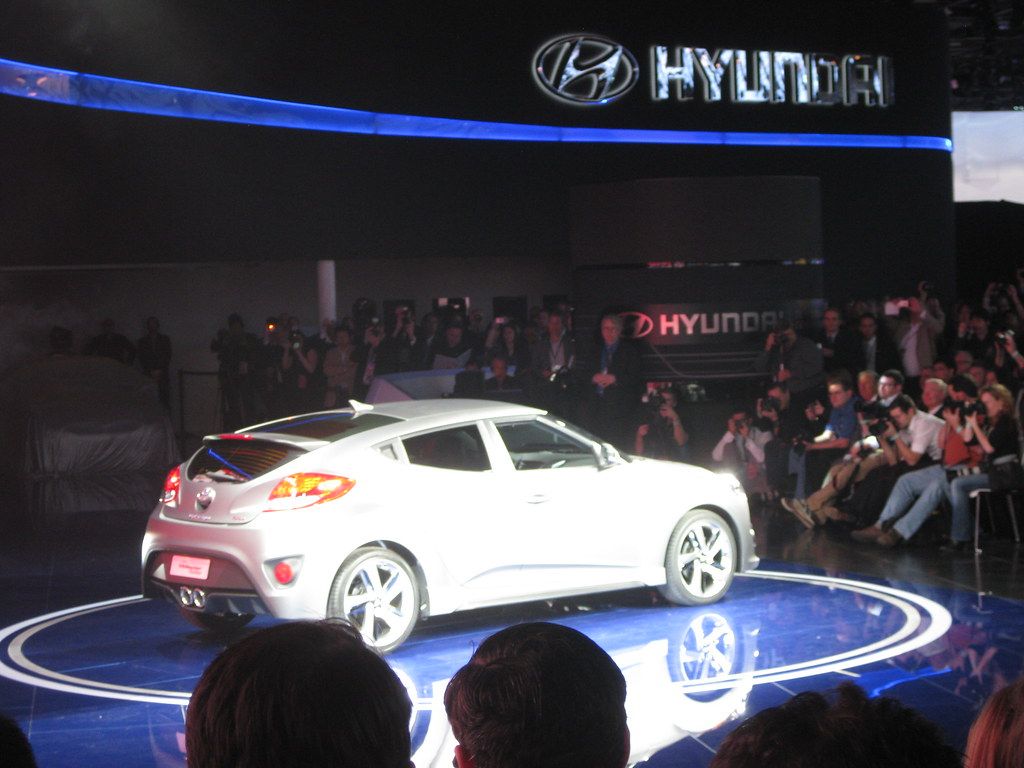
10. **Hyundai Veloster**The Hyundai Veloster, with its distinctive three-door styling and promise of responsive handling, certainly cut a cool figure on the road. It offered a unique aesthetic that appealed to drivers looking for something a bit different from the standard compact car fare. However, for many owners, the initial charm quickly wore off as a series of significant mechanical issues proved difficult to overlook, leading to a growing sense of regret.
Among the most concerning problems reported by Veloster owners are serious engine issues. These aren’t minor annoyances but can escalate to catastrophic failure, representing a major financial and logistical headache for owners. Such fundamental flaws in the heart of the vehicle cast a long shadow over any positive aspects of its design or handling, turning what should be a straightforward ownership experience into a stressful ordeal.
Further contributing to owner dissatisfaction is the Veloster’s dual-clutch transmission. While dual-clutch systems can offer quick shifts in performance-oriented applications, the one in the Veloster frequently exhibited its own set of problems. Owners reported issues such as delayed acceleration, a feeling of slipping gears, and jerky shifts, all of which compromise the smooth and engaging driving experience one would expect from a car with its sporty pretensions.
As if engine and transmission troubles weren’t enough, the Hyundai Veloster also faced complaints regarding its suspension and steering systems. These issues combined to create a driving experience that often felt less refined and reliable than initially promised. For a car that aimed to be a fun, distinctive compact, these pervasive mechanical and handling flaws meant that many owners ultimately found themselves grappling with repair bills and a car that simply didn’t live up to its stylish exterior.
Car Model Information: 2019 Hyundai Veloster Base
Name: Hyundai Veloster
Manufacturer: Hyundai Motor Company
Production: 2011–2022
Class: Sport compact car
Layout: Front-engine, front-wheel-drive layout
BodyStyle: hatchback
Predecessor: Hyundai Tiburon
ModelYears: 2012–2022
Assembly: Ulsan
Categories: All Wikipedia articles in need of updating, All articles with unsourced statements, Articles containing Korean-language text, Articles with short description, Articles with unsourced statements from May 2018
Summary: The Hyundai Veloster (Korean: 현대 벨로스터, romanized: Hyeondae Belloseuteo) is a compact car first produced in 2011 by Hyundai, with sales beginning in South Korea on March 10, 2011, and in Canada and the United States since the fall of 2011. In South Korea, it was marketed under Hyundai’s ‘Premium Youth Lab’. It was unveiled on January 10, 2011, at the Detroit Auto Show, and fills the void left when Hyundai discontinued the Hyundai Tiburon after the 2008 model year.
The car differs from most other hatchbacks with its asymmetrical door configuration, featuring one large door on the driver side and two smaller doors on the passenger side. This configuration is more common on commercial vehicles and minivans.
Get more information about: Hyundai Veloster
Buying a high-performing used car >>>
Brand: Hyundai Model: Veloster
Price: $13,825 Mileage: 81,234 mi.
Read more about: 12 Cars That Made Drivers Say ‘Nope, Not Again!’ – Your Ultimate Guide to Avoiding Instant Regret on Wheels
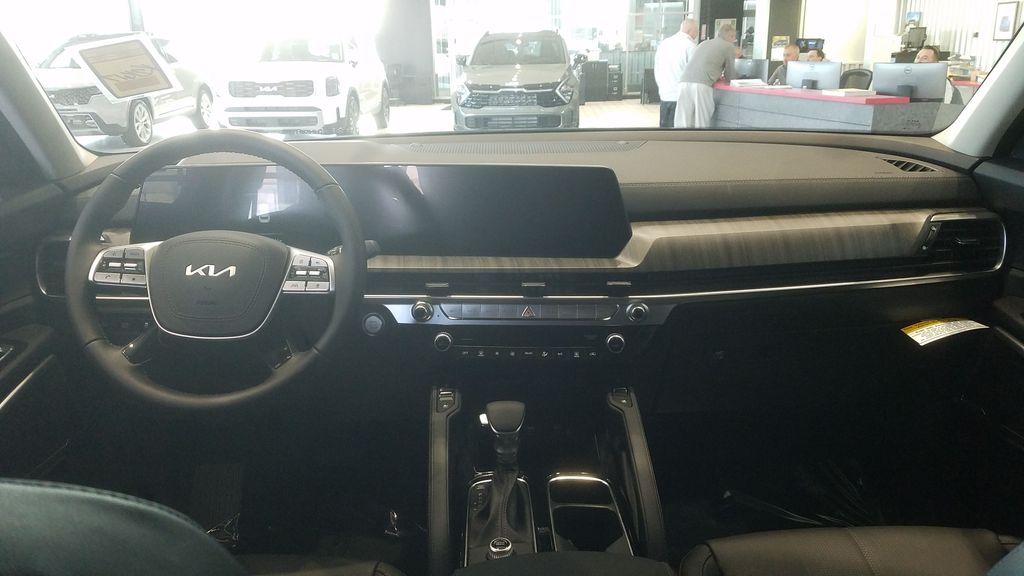
11. **Kia Rio**The Kia Rio has long been celebrated for its affordability and efficiency, making it an attractive option for budget-conscious buyers and those seeking a practical daily commuter. However, for a notable segment of its owners, these initial advantages were eventually overshadowed by a series of persistent problems, culminating in a significant degree of buyer’s remorse. It illustrates that even an economical choice can become expensive in terms of frustration and unexpected repairs.
At the core of many owner complaints are the Kia Rio’s engine issues. These problems frequently manifest as rough idling and persistent misfires, which are typically symptomatic of underlying faults with components like spark plugs or ignition coils. Such engine irregularities not only impact the vehicle’s performance and fuel efficiency but also signal potential long-term reliability concerns that can lead to costly diagnostic work and replacements.
Beyond the mechanical grievances, the interior quality of the Kia Rio also proved to be a significant point of contention for many drivers. Owners often cited the use of cheap materials, which detracted from the overall comfort and aesthetic appeal of the cabin. This perception of low-grade interior finishes, combined with actual comfort issues, meant that the daily experience of driving or riding in the Rio often felt less refined and more utilitarian than desired.
The cumulative effect of these engine troubles and quality-of-life complaints meant that the Rio, despite its undeniable affordability, often failed to deliver on the promise of a hassle-free and comfortable ownership experience. For many, the initial savings quickly evaporated in the face of maintenance concerns and a general feeling that they had compromised too much on quality and long-term satisfaction.
Car Model Information: 2023 Kia Rio S
Name: Kia Rio
Caption: Fourth generation Kia Rio
Manufacturer: Kia
Aka: Kia Pride (2005–2017),Kia K2 (China; 2011–2020)
Production: November 1999 – December 2023
ModelYears: 2001–2023 (North America)
BodyStyle: hatchback
Class: Subcompact car
Layout: Front-engine, front-wheel-drive layout
Predecessor: Kia Pride,Kia Avella
Successor: Kia K3 (BL7)
Categories: 2000s cars, 2010s cars, Articles containing Korean-language text, Articles with short description, CS1 Croatian-language sources (hr)
Summary: The Kia Rio (Korean: 기아 리오) is a subcompact car manufactured by Kia from 1999 to 2023. Body styles have included a three and five-door hatchback and four-door sedan, equipped with inline-four gasoline and diesel engines, and front-wheel drive.
The Rio replaced the first generation Pride—a rebadged version of the Ford Festiva—and the Avella, a subcompact sold as a Ford in some markets. A second generation was introduced in 2005 in Europe and in 2006 in North America, sharing its platform with the Hyundai Accent, a subcompact manufactured by its sister Hyundai Motor Company in South Korea.
In August 2023, the K3 was introduced as its successor in several markets such as Mexico and the GCC countries.
Get more information about: Kia Rio
Buying a high-performing used car >>>
Brand: Kia Model: Rio
Price: $17,218 Mileage: 22,509 mi.
Read more about: 12 Cars That Made Drivers Say ‘Nope, Not Again!’ – Your Ultimate Guide to Avoiding Instant Regret on Wheels
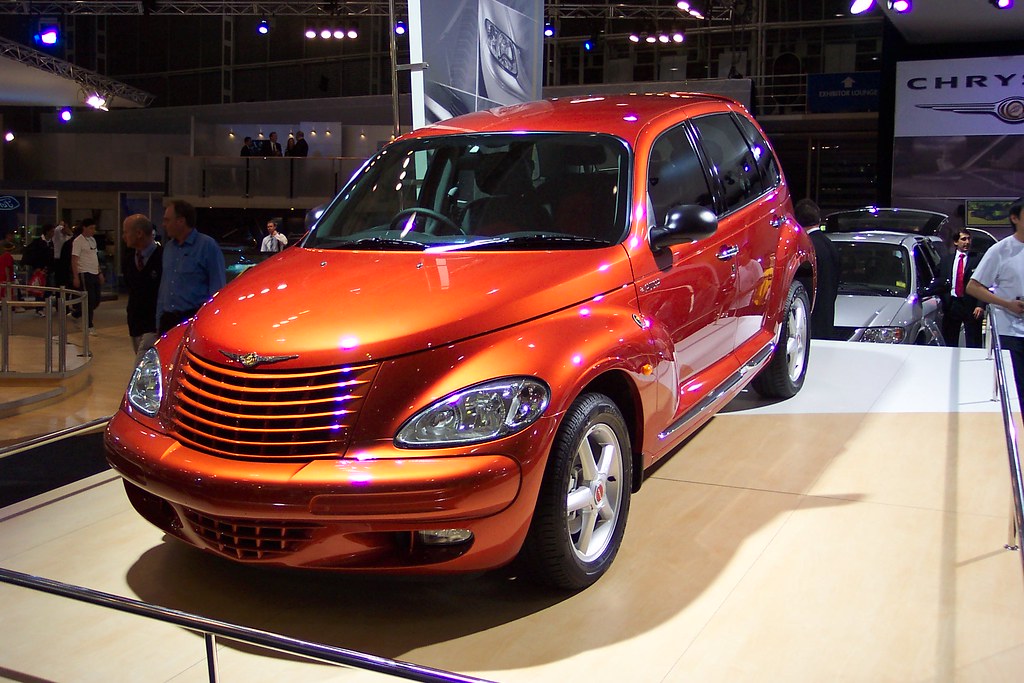
12. **Chrysler PT Cruiser**The Chrysler PT Cruiser holds a unique position in automotive history, instantly recognizable for its distinct retro styling that famously divided opinion. While some loved its throwback aesthetic, others found it polarizing. However, for a substantial number of owners, the vehicle’s appearance became secondary to a barrage of serious mechanical and electrical issues that consistently led to profound regret, irrespective of their feelings about its looks.
The list of engine issues plaguing the PT Cruiser is extensive and alarming. Owners reported everything from frequent stalling and rough idling, which are frustrating and potentially dangerous, to more severe problems like persistent overheating. Most critically, instances of head gasket failure were common, a major engine repair that can be incredibly costly and often signals the premature end of a vehicle’s life, leaving owners with little recourse.
In addition to its widespread engine woes, the PT Cruiser also suffered from significant transmission problems. These issues often manifested as rough shifting, slipping, or even complete transmission failure, undermining the vehicle’s fundamental driveability and reliability. Such a critical component failing meant owners faced exorbitant repair bills, transforming their quirky compact into an unreliable burden.
Adding to the litany of complaints were persistent electrical problems that could affect various systems, from power windows to dashboard instrumentation. This combination of pervasive engine, transmission, and electrical glitches painted a clear picture of a vehicle that, despite its distinctive charm, was fundamentally unreliable and expensive to maintain. For many, the PT Cruiser quickly evolved from a stylish statement to a constant source of mechanical and financial frustration.
Car Model Information: 2023 Honda Civic Sport
Name: Chrysler PT Cruiser
Manufacturer: Chrysler
ModelCode: PT,PG
Production: 2000–2010
ModelYears: 2001–2010
Assembly: Toluca, Mexico State
Designer: Bryan Nesbitt
Class: Compact car
BodyStyle: convertible
Platform: Chrysler PT platform
Related: Dodge SRT4,Dodge Neon
Predecessor: Dodge Neon
Successor: Lancia Delta#Third generation
Layout: Front-engine, front-wheel-drive layout
Engine: ubl
Transmission: Ultradrive#40TE
Wheelbase: 103 in
Abbr: on
Length: 168.8 in
Width: 67.1 in
Height: 63 in
Weight: 3123 lb
Categories: 2010s cars, All articles with unsourced statements, Articles with short description, Articles with unsourced statements from March 2018, Cars discontinued in 2010
Summary: The Chrysler PT Cruiser is a compact car that was built by the American company Chrysler from 2001 until 2010. Introduced as a five-door hatchback wagon, a two-door convertible variant was also made from 2005 until 2008.
Originally planned as a Plymouth model, the PT Cruiser was ultimately marketed as a Chrysler when Plymouth was discontinued. Intended to invoke 1930s aesthetics, the exterior of the PT Cruiser was designed by Bryan Nesbitt. The model received an intermediate facelift for the 2006 model year. Interior packaging was noted for its high roof, high h-point seating, and flexible cargo and passenger configurations enabled by a multi-level rear cargo shelf and rear seats a user could fold, tumble, or remove.
The PT Cruiser was produced in Mexico and Austria at the Toluca Car Assembly and Eurostar Automobilwerk factories respectively. By the end of production in July 2010, worldwide production had reached 1.35 million.
In its nameplate, PT stands for “Personal Transport” or “Personal Transportation”. PT was the PT Cruiser’s product code for the Mexican-made units.
Get more information about: Chrysler PT Cruiser
Buying a high-performing used car >>>
Brand: Chrysler Model: PT Cruiser
Price: $27,589 Mileage: 27,524 mi.
Read more about: 12 Cars That Made Drivers Say ‘Nope, Not Again!’ – Your Ultimate Guide to Avoiding Instant Regret on Wheels
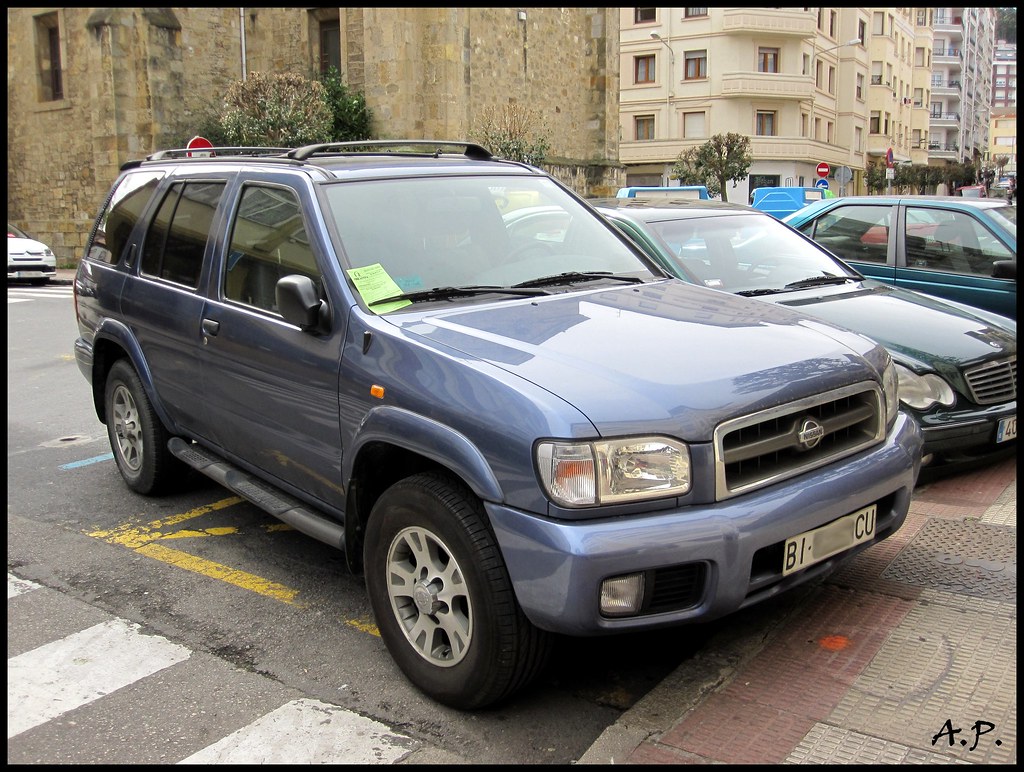
13. **Nissan Pathfinder**The Nissan Pathfinder, a popular SUV that has seen many iterations, has unfortunately earned a spot on our list for model years that left owners regretting their buying decisions. Despite its appeal as a family-friendly SUV, a recurring set of problems, particularly concerning its transmission, consistently undermined its perceived reliability and practicality. It’s a prime example of how even a well-known nameplate can disappoint.
Once again, the infamous continuously variable transmission (CVT) is a central point of contention for many Nissan Pathfinder owners. This transmission system has been widely reported to cause a range of performance-degrading issues. Owners frequently experienced rough shifting, an unsettling shuddering sensation during operation, and, perhaps most concerningly, instances of overheating. These problems not only made the driving experience less pleasant but also raised serious questions about the transmission’s longevity.
For many Pathfinder owners, the transmission issues were so severe that they culminated in the necessity of replacing the entire unit, a repair that is both unexpected and incredibly expensive. This level of mechanical failure highlights a fundamental flaw in a core component, leading to significant financial strain and a profound loss of trust in the vehicle’s dependability. Such a major repair demand is a powerful catalyst for buyer’s remorse.
Beyond the pervasive CVT problems, the Nissan Pathfinder also contended with other mechanical grievances that contributed to owner dissatisfaction. These included various engine issues, which could manifest in different ways, along with persistent fuel system problems. The cumulative effect of these reliability concerns meant that the Pathfinder, for a significant number of its owners, became a vehicle that demanded far more in terms of maintenance and patience than it delivered in reliable family transportation.
Car Model Information: 2023 Nissan Pathfinder SL
Name: Nissan Pathfinder
Caption: 2022 Nissan Pathfinder Platinum 4WD (R53, US)
Manufacturer: Nissan
Production: 1985–present
ModelYears: unbulleted list
Layout: unbulleted list
Class: unbulleted list
Chassis: unbulleted list
Predecessor: unbulleted list
Successor: unbulleted list
Categories: 1990s cars, 2000s cars, 2010s cars, 2020s cars, All-wheel-drive vehicles
Summary: The Nissan Pathfinder is a range of sport utility vehicles manufactured by Nissan since 1985. Until the third-generation model, the Pathfinder is based on Nissan’s compact pickup truck platform which it shares with the Navara/Frontier.
The Pathfinder was marketed as the Nissan Terrano (Japanese: 日産・テラノ, Hepburn: Nissan Terano) outside North America. Beginning in 2004, the vehicles were marketed globally as the Pathfinder.
In 2012, the R52 series Pathfinder was released as a three-row crossover SUV based on the unibody Nissan D platform, moving away from the body-on-frame chassis format. The role of a mid-size body-on-frame SUV in Nissan’s global lineup was passed to the Terra/X-Terra, which was released in 2018 and based on the D23 series Navara.
Get more information about: Nissan Pathfinder
Buying a high-performing used car >>>
Brand: Nissan Model: Pathfinder
Price: $33,900 Mileage: 18,055 mi.
Read more about: 11 SUVs That Promise Adventure But Deliver Owners Immediate Regret
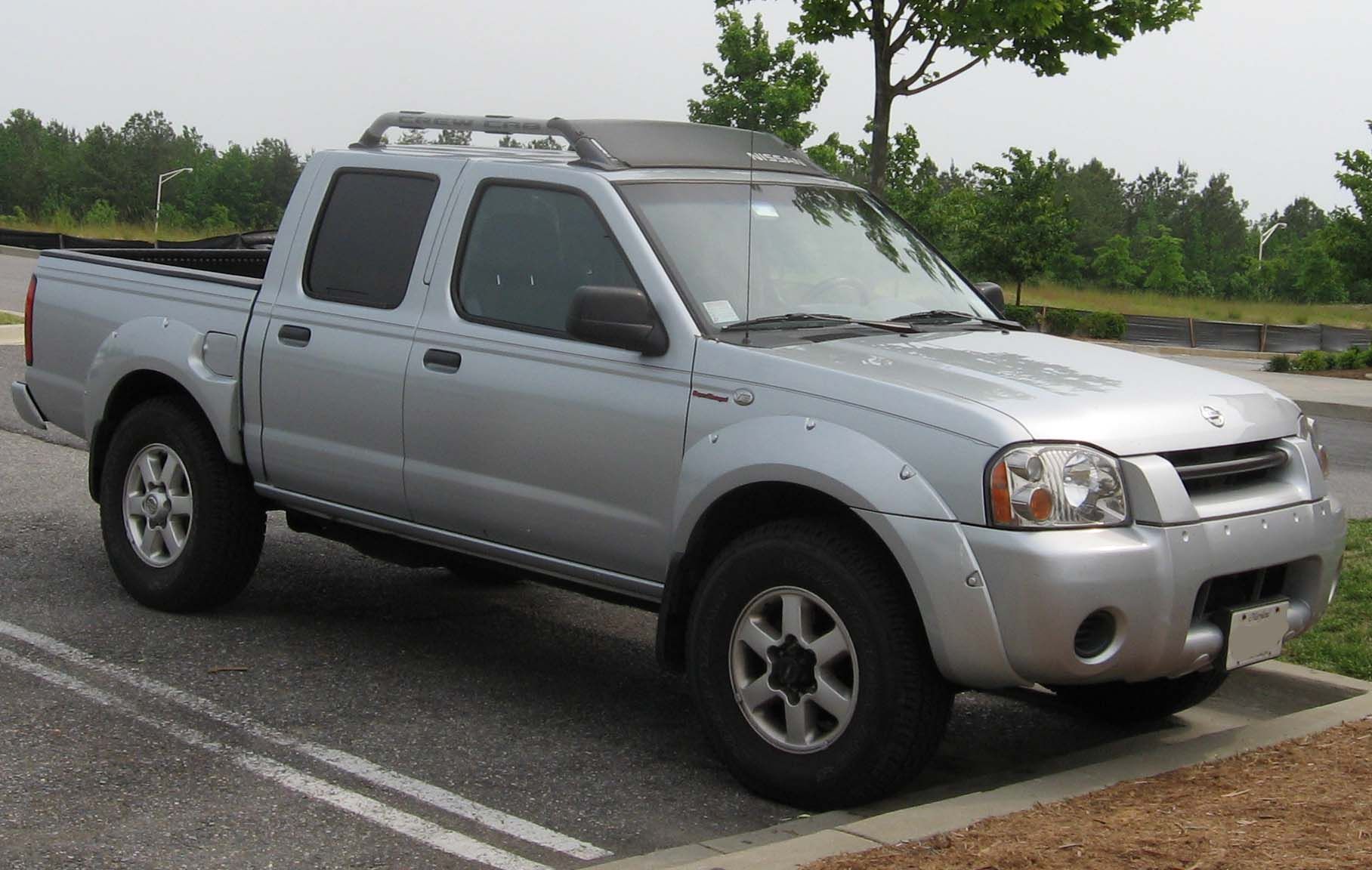
14. **Nissan Frontier**Even rugged mid-size pickup trucks are not immune to buyer’s remorse, and the Nissan Frontier is a clear case in point. For specific model years, this truck, intended for dependable work and leisure, became a source of significant frustration for its owners, often leading to literal head-shaking and dashboard-pounding over its persistent issues. It’s a stark reminder that even robust vehicles can harbor debilitating flaws.
The 2005 to 2010 model years of the Nissan Frontier are particularly notorious for a critical transmission flaw. During this period, a design defect allowed the radiator to leak coolant directly into the transmission fluid. This cross-contamination had catastrophic consequences for the gearbox, leading to a range of severe operational problems that directly impacted the truck’s ability to perform its core functions reliably.
The effects of this coolant leak on the transmission were immediately felt by owners. Reports of slipping gears, herky-jerky shifting, and ultimately, complete transmission failure became alarmingly common. For a pickup truck, which owners rely on for hauling and often for demanding work, such fundamental transmission failures represented not just a mechanical breakdown but a significant blow to their livelihood and peace of mind.
Furthermore, the Nissan Frontier also struggled with other notable mechanical issues, including various engine problems and persistent timing chain concerns. These additional grievances, combined with the severe transmission defect, painted a comprehensive picture of a vehicle that, despite its truck segment positioning, consistently failed to deliver the expected durability and reliability, leaving a trail of deeply regretful owners in its wake.
Car Model Information: 2016 Nissan Frontier SV
Categories: All set index articles, Articles with short description, Nissan vehicles, Set index articles on cars, Short description is different from Wikidata
Summary: The Nissan Frontier is a nameplate used on three different pickup truck models by Nissan:
Nissan Frontier (international), an alternative nameplate for the NP300/Navara on some markets
Nissan Frontier (North America), a rebadged NP300/Navara from 1997 to 2021, then became a separate model since 2021
Nissan Frontier Pro, a rebadged Dongfeng Z9 PHEV that will be available from 2025.
Get more information about: Nissan Frontier
Buying a high-performing used car >>>
Brand: Nissan Model: Frontier
Price: $16,949 Mileage: 115,564 mi.
Read more about: 11 SUVs That Promise Adventure But Deliver Owners Immediate Regret
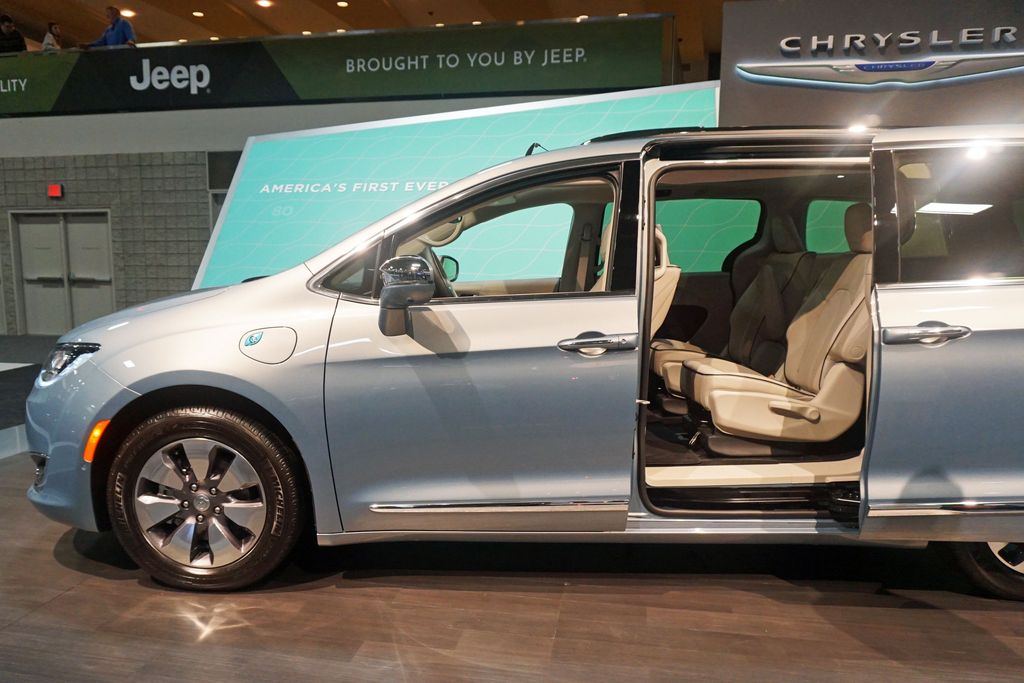
15. **Chrysler Pacifica Hybrid**The Chrysler Pacifica Hybrid stands out as a popular minivan, appealing to families seeking both spacious utility and the fuel efficiency benefits of a plug-in hybrid powertrain. However, for a significant number of owners, the promise of greener travel and lower fuel costs has been overshadowed by a litany of battery and electrical problems, turning what should be a practical choice into a problematic one.
The core of the Pacifica Hybrid’s owner dissatisfaction lies squarely with its complex plug-in hybrid powertrain. Many owners have reported persistent issues with battery drain, leading to an inconsistent all-electric range that often falls short of expectations. More critically, instances of battery failure have been a significant concern, representing a major defect in the vehicle’s most defining and expensive component, directly impacting its hybrid capabilities.
Adding to the powertrain woes are widespread electrical problems that extend beyond the battery system. These can manifest in a variety of frustrating ways, affecting numerous vehicle functions and often requiring multiple visits to the dealership. This consistent unreliability in key systems undermines the convenience and peace of mind that minivan owners value, transforming daily driving into a constant worry about potential breakdowns.
The electric continuous variable transmission (eCVT) in the Pacifica Hybrid also features on the list of complaints, suggesting that even this specialized transmission, designed to work seamlessly with the hybrid system, has its own set of issues. For many, the combination of these battery, electrical, and transmission problems meant that the advanced technology meant to enhance the Pacifica’s appeal instead became its Achilles’ heel, prompting many owners to regret choosing the hybrid variant over a more conventional minivan.
### Avoid These 15 Vehicles If You Don’t Want a Case of Buyer’s Remorse
Ultimately, the automotive landscape is filled with choices, and while many vehicles offer years of reliable service and driving enjoyment, others prove to be a source of persistent headaches and unexpected expenses. Our comprehensive look at these 15 vehicles, from compact sedans with chronic transmission issues to hybrid minivans plagued by battery woes, underscores a crucial lesson for any car buyer: due diligence is paramount.
Life often presents opportunities to learn from the experiences of others, and car ownership is certainly one of those instances where heeding cautionary tales can save you significant time, money, and frustration. The vehicles detailed in this extensive list, while perhaps attractive on paper or at first glance, have repeatedly demonstrated their capacity to disappoint their owners. They serve as potent reminders that a gleaming exterior or a compelling marketing campaign doesn’t always translate into a satisfying, reliable ownership experience.
Car Model Information: 2023 Honda Civic Sport
Name: Chrysler Pacifica (RU)
Manufacturer: Chrysler (automotive brand)
Aka: Chrysler Voyager,Chrysler Grand Caravan (Canada, 2021–present)
Production: 2016–present
ModelYears: 2017–present
Assembly: Windsor, Ontario
Designer: Irina Zavatski,Winnie Cheung (interior)
Class: Minivan
BodyStyle: 5-door minivan
Layout: Front-engine, front-wheel drive,Front-engine, all-wheel drive
Platform: Compact U.S. Wide platform
Related: Chrysler 200#Second generation (2014–)
Engine: Chrysler Pentastar engine#3.6L,FCA Global Medium Engine
Motor: 2x electric motors (SiEVT main motor & motor generator; PHEV)
Transmission: ZF 9HP transmission,automatic transmission,Continuously variable transmission
Drivetrain: PHEV
ElectricRange: cvt
Battery: val,lithium-ion battery
Wheelbase: 3089 mm
Abbr: on
Order: flip (hybrid)
Length: 203.6 in
Width: 79.6 in
Height: convert
Weight: {{convert,1964,kg,lb,abbr=on,order=flip
Predecessor: Chrysler minivans (RT)
Categories: 2010s cars, All-wheel-drive vehicles, Articles with short description, CS1 Spanish-language sources (es), Cars introduced in 2016
Summary: The Chrysler Pacifica is a minivan produced by the Chrysler division of Stellantis since the 2017 model year. Replacing the Chrysler Town & Country, the Pacifica is the sixth generation of Chrysler minivans, taking its name from the 2004–2008 product line. Along with serving as the first minivan with a plug-in hybrid drivetrain, the Pacifica has also served as a platform for autonomous vehicle development.
For the 2020 model year, Chrysler repackaged the lower-trim versions of the Pacifica as a revived Chrysler Voyager, largely to expand fleet sales of the model line; following the retirement of the Dodge Grand Caravan, the Chrysler Voyager was introduced in Canada for 2021 as the Chrysler Grand Caravan (moving the nameplate from Dodge to Chrysler after 36 years). Following the retirement of the Chrysler 300 sedan, the Pacifica/Voyager/Grand Caravan is currently the only vehicle marketed by Chrysler.
Chrysler has assembled the Pacifica minivan (and the Voyager/Grand Caravan) in its Windsor Assembly facility in Ontario (home to Chrysler minivan assembly since 1983).
Get more information about: Chrysler Pacifica (minivan)
Buying a high-performing used car >>>
Brand: Chrysler Model: Pacifica Hybrid
Price: $27,589 Mileage: 27,524 mi.
Read more about: 12 Cars That Made Drivers Say ‘Nope, Not Again!’ – Your Ultimate Guide to Avoiding Instant Regret on Wheels
So, as you consider your next vehicle purchase, remember the stories of these 15 cars. Unless you’re prepared to roll the dice and hope for an experience that stands in stark contrast to the widespread regret reported by many current owners, these are the models worth skipping. Prioritize long-term dependability, thoroughly research owner reviews, and look beyond the initial hype. Making an informed decision isn’t just about choosing a car; it’s about choosing peace of mind on the open road.

